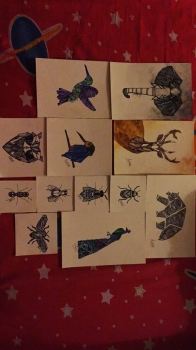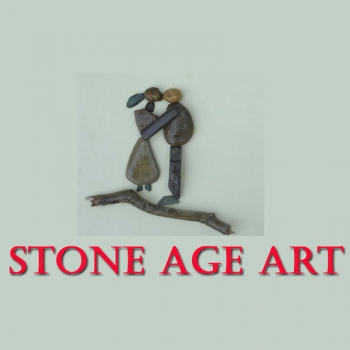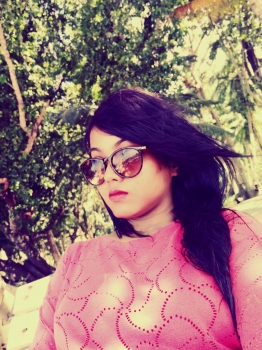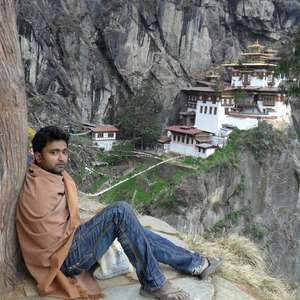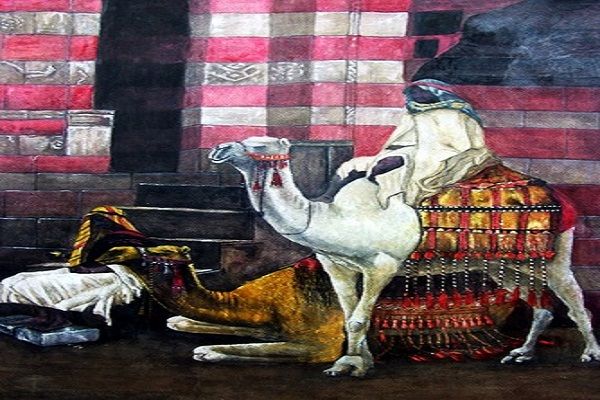
Some traditional Indian art pieces such as paintings and sculptures can be as old as 500-600 years. Some south Indian styles of paintings are even older, drawing their inspirations from Ajanta era. A lot of people these days like to collect authentic and real traditional Indian art belonging to the time they were actually painted in. For sellers and the buyers as well, it becomes a challenge to make sure that the old traditional paintings they possess are able to stand the test of time and do not go bad because of factors such as weather, moisture, pest infestation, microbes and other related things. Old Indian paintings were usually made using natural dyes and paints such as vegetable oils, extracts from leaves and flowers, chalk, charcoal etc. Such natural pigments are very prone to damages because of the reasons mentioned earlier. In this article, we shall learn about various simple preservation and restoration techniques to make sure that the old traditional Indian art pieces are able to survive for long times.
Exposure to Light
For the natural colour and pigment to actually stay on the surface of the painting, it is important that the painting receives ideal lighting. This is usually done by hanging the painting in the area that receives diffused natural light or there is some artificial source of light whose intensity can be controlled. An old traditional Indian painting should never be kept indirect exposure of the sunlight or ultraviolet light. If done so, it would change the balance and brilliance of the colors and even cause the surface to crack a bit. And if the surface of a painting is cracked, well, then it takes a lot of money and expert intervention to get it restored back to its normal state.
Some oil paintings, if not exposed to light, are capable of going bad as the oil in the paint tends to go dark in the absence of any light. But this situation is not as grave as it can be reversed by exposing the painting to diffused light for a couple of days and the oil painting regains its normal color.
Atmospheric Conditions
Old and traditional Indian artworks, especially paintings, were done on wooden frames. Wood expands and contracts due to atmospheric conditions. So as a result, the painting as a whole is subjected to stress, which is capable of ruining its dimensions. This is turn, causes the painting to go brittle and suffer heavy damages. There is nothing that can be done to stop the expansion-contraction but it surely can be controlled. It has been reported that the least (most acceptable) stress occurs at a temperature of around 60 degrees and humidity around 60 per cent. Traditional Indian art at museums is kept under such controlled conditions only.
Damage Due to Moisture
Due to excessive moisture, naturally painted traditional Indian art develops little smelly and dark patches that are actually a kind of fungus. They are called mold and mildew. Humidity accelerates the process of formation of molds and it is most commonly observed on paper paintings. Mold and mildew can be removed by using the following techniques:
If the patches are little and fragile, you can use a small brush or a very fine and soft cloth piece to gently clean the painting.
If the patches are big and spreading, you can use alcohol dabbed in a fine cloth piece to clean the fungus. It is suggested to use denatured alcohol so that the cleaning chemical does not react with the pigments of the paintings.
Some people use varnish to protect the paintings from the ill effects of moisture and humidity. The varnish is a kind of chemical that forms a transparent, protective and non-reactive layer over the painting. It acts as a barrier between the moisture and the paintings and prevents the formations of mold, mildew or any other fungus.
Physical Damages
The most common types of damages experienced by old traditional Indian paintings are physical damages that are caused mostly due to poor handling, transit and hanging. Recently a 2 million dollar Italian painting in Taiwan experienced severe physical damage as a kid tripped and put his fist through it. So it is very important to make sure that the paintings are hung at a safe distance from the viewer. If the painting is damaged, consult an art expert or a restorer as they knew how to spin magic when it comes to restoring the most severe of the damages. Physical damages such as chipping, flaking, puncturing and tearing should be carefully guarded against as they are capable of bringing down the value of the painting.
Traditional Indian art is well known around the world for their beautiful depiction of the subject using exquisite techniques. So it is important that old traditional Indian paintings continue to survive for the future generations to see and draw inspirations from.











